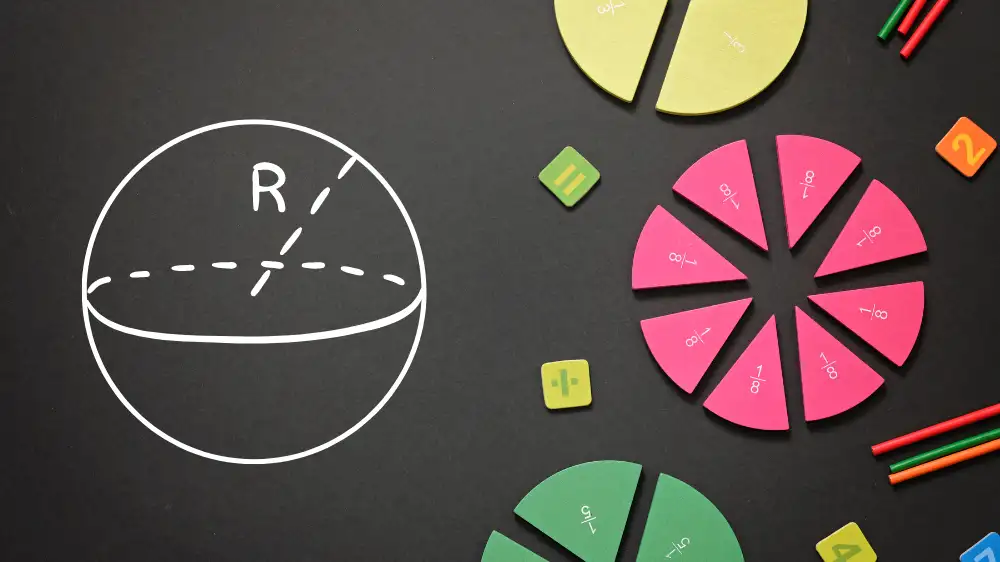You already know that aspects, which are angular distances between planets on the celestial sphere, are cast in a special aspect plane when it comes to primary directions.
In this article, we will describe the equations for finding the aspect degrees in the plane constructed by the French astrologer Jean-Baptiste Morin (Morinus).
[toc]
Why Did Morinus Construct His Aspect Plane?
Since the planet does not belong to the ecliptic but is slightly above/below it due to the inclination of its orbit, astrologers used to construct different circles of aspects when they consider rays of the planet. But J.B. Morinus refuted commonly used approaches because of the following arguments.
- The circle of aspects cannot coincide with the orbital plane since the maximum celestial latitude does not coincide with the orbit's inclination (due to the ellipticity of the orbits)
- Nor does the circle of aspects coincide with the equator. It is because there are simply no planets on this plane. At the same time, the practice of astrology shows that all planets group around the ecliptic. Also, on the ecliptic itself, the usual zodiac aspects are built when we ignore the latitudes of the planets.
- Nor can it coincide with the ecliptic since the planets are above or below that plane. We can safely ignore that latitude when working with secondary motion, but we cannot do it for primary directions. For aspects are the rays emitted from the body of the planets, not from their ecliptic projection.
- Morinus also rejected the idea of constructing artificial circles, such as the Bianchini circle, since it includes the planet's current position but doesn't correspond with its further move. For example, suppose Mars is departing from its apparent North Node ascending above the ecliptic. At the same time, the circle of Bianchini, on the contrary, declines to the ecliptic.
To the problem of Bianchini method. While planet P moves away from the ecliptic on its path, while the circle of Aspects declines to it.
Instead, Morinus proposed a circle of aspects that satisfies two conditions:
- On the one hand, it passes through the planet at a given time.
- On the other hand, it corresponds to the current movement of the planet along its apparent path - the way it moves on the path (approaching or departing ecliptic), the way it moves along the circle of aspect.
- The maximum elevation over the ecliptic, mentioned above, is the inclination of the circle of aspect.
This article is also available in video format:
The apparent motion of the planet
Since the planet moves around the Sun in its orbit, which is inclined to the ecliptic, and the Sun moves along the ecliptic, the planet's apparent motion takes a non-trivial form.
The apparent motion of the planet on the celestial sphere. The planet's apparent motion throughout the year is represented by non-trivial loops shown in blue.
The apparent motion of Mercury along the ecliptic with real loops for 2021.
The Circle of Aspects
Morin uses the following method to build a circle of aspects.
First, he considers the segment of the path to which the planet $P$ belongs between two consecutive nodes. Then he finds the local extremum of the planet's path in that segment (a point $B$ in the figure below). He uses the latitude of this local extremum as an inclination of the circle of aspects.
The first step in the Morinus' approach. The blue line represents the apparent path of planet P on a celestial sphere.
Second, he draws a plane that goes through the point $P$ and has a declination we just established, as shown below.
The second step in the Morinus' approach.
This method can be applied to any point the apparent planet's path.
The circle of aspect for the planet with Southern latitude. The point P approaches the North Node both on its apparent path and on the circle of aspects, so the circle of aspects correlates with the movement of P.
Equation of the Circle of Aspects
Let's mathematically derive how to calculate planetary aspects in this plane. We will consider the apparent motion of the planet along the ecliptic (taking into account its deviation $\delta$ from the ecliptical plane) and denote:
- $\delta_\text{P}$ its current celestial latitude,
- $\delta_\text{max}$ its maximum deviation from the ecliptic in its movement from the past mode to the next one. Node is the intersection of the planet's orbit with ecliptic.
Let's draw a circle that goes through two points—the planet's maximum and current latitude. It is the circle of aspects.
Figure A. The circle of aspects. Planet (P) is in the center.
Technically, our task boils down to the following. Suppose we introduce longitude $\lambda'$ along the circle of aspects, starting from point A, which we will take as zero. Next, we will translate this longitude into ecliptical coordinates $(\lambda, \delta)$, thus determining all the points on the circle of aspects, including planetary aspects.
Let's consider some point F with coordinates $(\lambda', \delta'=0°)$ on the circle of aspects.
Figure B. Point F with coordinates (λ', δ' = 0) on the circle of aspects.
The side AB of the triangle ABC is equal to 90°. Hence, if we apply the formula $(6)$ of the spherical triangle to ABC, we will see that angle $\angle BAC$ equals $\delta_\text{max}$.
Now, if we apply the same formula to a smaller triangle AFG, we will have:
$$ \sin\delta = \sin\lambda'\sin\delta_\text{max} $$
In other words, we have expressed the ecliptical latitude of any point on the circle of aspects with coordinate $\lambda'$:
$$ \delta = \arcsin(\sin\lambda' \sin\delta_\text{max}) $$
Now let's return to the Figure A and apply the formula $(3)$ of the spherical triangle to APE:
$$ \tan\delta_\text{P} = \sin AE \tan\delta_\text{max} $$
Thus, we can express AE distance by the following formula:
$$ AE = \arcsin\left(\frac{\tan\delta_\text{P}}{\tan\delta_\text{max}}\right) $$ Now, let's calculate the ecliptical longitude of point A. As you see from Figure A, the maximal latitude is to the right of point P. It means the planet is approaching it, and point A is to the left from planet P. In that case we can write that $\lambda_\text{A} + AE = \lambda_\text{P}$. The situation will be different if the planet departs the point of maximal latitude. In that case point A will be to the right of the planet P, meaning that $\lambda_\text{P} + AE = \lambda_\text{A}$.
In the most general case, we can write: $$ \lambda_\text{A} = \lambda_\text{P} - k\times AE $$ The coefficient $k$ equals $+1$, if the planet moves toward $\delta_\text{max}$ (as in the Figure B), and $k=-1$ if it moves away from it.
Now let's return to Figure B and apply the formula $(9)$ of the spherical triangle to AFG, from which we have:
$$ AG = \arctan(\cos\delta_\text{max}\tan\lambda') $$
Similar to what we wrote above, if the planets movest to $\delta_\text{max}$, then $\lambda_\text{A} + AG = \lambda$, otherwise $\lambda + AG = \lambda_\text{A}$. In other words,
$$ \lambda = \lambda_\text{A} + k\times AG $$
Now, let's put it all together. To avoid writing a long formula, I'll split it into parts:
$$ \begin{align} &\begin{cases} &AE = \arcsin(\tan\delta_\text{P} / \tan \delta_\text{max}) \\ &AG = \arctan(\cos\delta_\text{max}\tan\lambda') \end{cases} \\ \\ &\begin{cases} &\delta = \arcsin(\sin\lambda' \sin\delta_\text{max})\\ &\lambda = \lambda_\text{P} + k\times (AG - AE) \end{cases} \end{align} $$
To use this formula, you must substitute the values $\lambda'$ for different aspects. For instance,
- The planetary bodily position is $\lambda' = AP$.
- The planetary sinister trigon is $\lambda' = AP + k\times 120°$.
- The planetary dexter sextile is $\lambda' = AP - k\times 60°$.
- And so on.
The AP is the longitude of the point P on the circle of aspect. We can find it by applying the formula $(6)$ of the spherical triangle to the triangle APE, from which we have
$$ AP = \arcsin\left(\frac{\sin\delta_\text{P}}{\sin\delta_\text{max}}\right) $$
So, in the most general case, we can write:
Here, “aspect” is 0° for bodily position, 60° for sinister sextile, –60° for dexter sextile, and so on.
Finally, our set of equations is following:
Here
- $(\lambda_\text{P}, \delta_\text{P})$ are the ecliptical coordinated of the planet.
- $\delta_\text{max}$ is its maximum latitude on its way from the previous to the following node (intersection of orbit with the ecliptic).
- The coefficient $k$ equals $+1$, if the planet moves toward $\delta_\text{max}$, and $k=-1$ if it moves away from it.
- Finally, “aspect” is 0° for bodily position, 30° for sinister sextile, –30° for dexter sextile, and so on.
Example
Let me show these formulas in action on the example of tY in 23° l in Winston Churchill's horoscope.
Winston Churchill
First, I'll find the maximum latitude of Jupiter on its path from the last to the next node. To do this, I will visit the astro.com.
Ephemerides are tables that contain the ecliptical $(\lambda, \delta)$ coordinates of planets for each day. I am primarily interested in the tables that include the latitudes above the ecliptic. So, I choose the table with latitudes for the year 1874. Then, I locate the row with the birth date in that table and find Jupiter's latitude for that date. It is 1º north 10', which means +1º 10' (above the ecliptic).
Next, I search through all the dates forward in time until the point where the latitude is zero, and then I do the same backward in time. I have the time interval when Jupiter entered the northern hemisphere and when it will leave it. Within that interval, I identify the day when Jupiter maximally deviates from the ecliptic.
It was before the birthday, around 3rd of May 1874, when Jupiter was in 27° Virgo with maximum latitude $\delta_\text{max}$ of 1°34' .
I also note that Jupiter moves away from its maximal latitude, so the coefficient $k$ in the formula $(\ref{81})$ is –1. Now, I substitute the following data into the formula:
- Jupiter's ecliptical coordinates $(\lambda_\text{P} = 203° 34', \delta_\text{P} = 1° 10')$,
- Jupiter's maximum latitude on its cycle $\delta_\text{max}=1.5687°$,
- Coefficient $k = -1$,
- “Aspect” is $+60°$ for the sinister sextile in Sagittarius.
It will gives the following results: $$ \begin{align} &\begin{cases} &\lambda' = 347.67°\\ &AE = 47.66° \\ &AG = 347.67° \\ \end{cases} \\ \\ &\begin{cases} &\delta = -0°20'\\ &\lambda = 263° 33' \end{cases} \end{align} $$
Here is the graphical representation of Jupiter's circle of position with sinister sextile:
Graphical representation of Jupiter's sextile in Churchill's horoscope.


